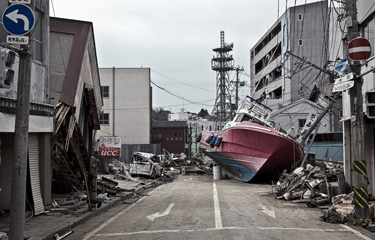Japan quake rattles nerves as the 10-year anniversary of "the big one" approaches

A strong earthquake on the night of 13 February shook the same area of Japan that suffered a massive quake, tsunami, and subsequent nuclear disaster on 11 March, 2011. While the timing and location were ominous, no tsunami warning was issued this time.
The large earthquake offshore from Fukushima Prefecture occurred at 11:08 p.m. on Saturday. It had a magnitude of 7.1 on the Richter scale and a Japan Meteorological Agency (JMA) seismic intensity (shindo in Japanese) of 6+. Magnitude measures the amount of energy released at the earthquake’s epicenter, while seismic intensity measures the shaking at a certain point on the earth’s surface. The “shindo” would then be different in each area, generally decreasing further away from the epicenter.
No deaths resulted, though there were several injuries, including several people who were injured when a stone monument at a temple fell on a car.
The JMA issued several notices between 13 and 15 February, acknowledging there were actually 14 tremors of varying intensity between 7:52 p.m. on Saturday and 4:31 p.m. on Sunday, but the highest-intensity readings all fell within a one-minute period. Smaller readings did not merit press releases but continued through 15 February.
The JMA warned residents to secure furniture against aftershocks. It also advised caution against landslides, as the shaking creates unstable ground on hillsides. There were in fact several landslides, one of which shut down the Joban Expressway, a major expressway in Fukushima Prefecture, in both directions. Bullet train service has also been halted for about 10 days so that the line can be checked for damage. Several electrical poles that provide power to the trains on the line appear to have been toppled. Japan Airlines has added flights to the region to help offset the transportation bottleneck.
The main damage to fishing infrastructure was at Matsukawaura fishing port in Soma, Fukushima Prefecture. The ground shifted, cracking the cement of the dock along about 100 meters and raising one side about by 10 centimeters. Some areas also suffered liquefaction.
Extensive areas are without running water after mains broke, and the government said it will send trucked-in drinking water to the affected regions. Power outages occurred, but are coming back on line fairly quickly. These infrastructure problems will probably be more troublesome to the fishing industry than physical damage to industry facilities, which appears to be minor.
Photo courtesy of Fly_and_Dive/Shutterstock






Share